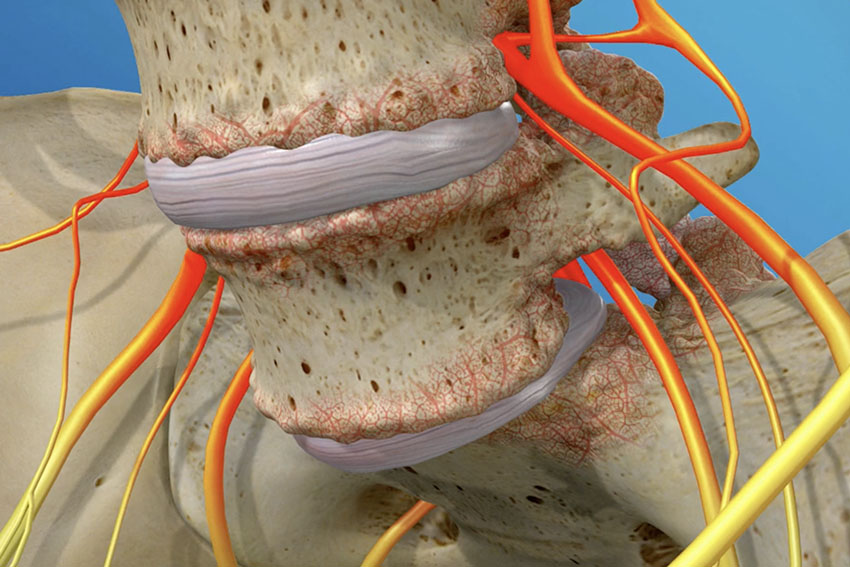
What causes bone spurs?
As people age the spine starts to wear out. The spine undergoes wear and tear from daily living, work, sports and accidents. This damage weakens the discs and facet joints, producing instability or abnormal movements of the spine. If this process continues, the spine may fall apart and one vertebra may slip forward relative to another vertebrae. This process is called spondylolithesis. Instability puts stress on the discs, ligaments, tendons and bones, which stimulates new bone formation to strengthen the spine and hold it together. This new bone formation is called bone spurs or osteophytes. To diagnose and treat bone spurs, our spinal clinics in Hackettstown and Newton may use a variety of methods including spinal injections and pain mapping.
Bone spurs may pinch nerves inside the spinal canal. The spinal canal may be compressed in the center, outer gutters, exiting hole or just outside of the spine. Central compression is called central spinal stenosis. Gutter compression is referred to as lateral recess stenosis. If the nerve is compressed in the foramen or hole exiting between the vertebrae this is called foraminal stenosis. Lastly, if the nerve is compressed outside of the spine it is called far lateral stenosis. This may cause neck, arm, back and leg pain depending on the location of the bone spur. The pain may be associated with numbness, tingling and weakness.
Diagnosing bone spurs
Bone spurs may be seen on X-rays, CT and MRI. X-rays show irregular white areas in the spine. CT scan shows the size, shape and location of bone spurs best. MRI scan is good at showing if the bone spurs are pinching the nerves. EMG (electromyography) nerve studies can help confirm nerve irritation and injury.
Bone spur treatment
Spinal injections may be used at our Hackettstown and Newton clinics to determine if the bone spur is causing pain, also known as pain mapping. A spinal needle is placed where the bone spur is pinching the nerve under x-ray guidance. Numbing medicine is injected on the bone spur and nerve. If the bone spur is the cause of the pain, the pain will temporarily improve or stop.
Patients who do not benefit from conservative treatment may benefit from surgical treatment. Traditional surgery involved removal of the facet joint to take pressure off the nerve combined with spinal fusion and instrumentation to hold the spine together. Today back and leg pain may be treated with endoscopic foraminotomy.
Endoscopic foraminotomy is a procedure wherein a micro video camera is inserted through a very small incision onto the bone spur pinching the nerve. The camera projects the images onto a video screen so the surgeon can easily visualize the compression. Tiny instruments are inserted through the camera to decompress the nerve relieving pain and suffering. Advantages of endoscopic spine surgery include twilight sedation (usually avoid general anesthesia), very small incision (size of a finger nail), minimal postoperative pain and much shorter recovery then traditional fusion surgery.
To learn more about treatment options for bone spurs, including spinal injections and pain mapping, please contact our clinic in Hackettstown or Newton.
